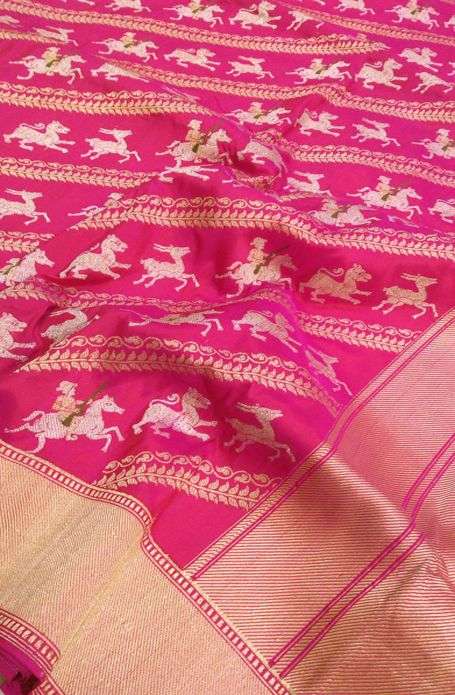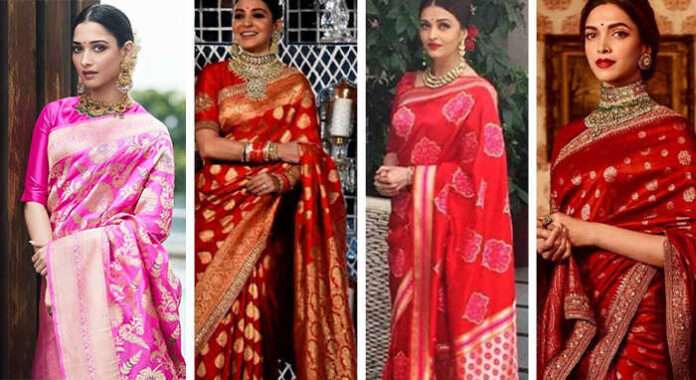Sarees are defined as a gorgeous necessity among Indian clothing. The Banarasi sarees are made in Varanasi in Uttar Pradesh and were initially introduced to India by the Mughal Empire and it now has a mixture of both the Mughal and Indian culture. They are one of the finest sarees you will come across and are known for their diverse motifs, patterns, and designs.
Banarasi sarees make for a must-have in the wardrobe of every Indian woman for their glossy look and extravagance in fabric. They are not only popular as part of the bridal trousseau in Bengal weddings but women from all places, religions and social status love this saree. This saree is traditionally made in four varieties but were later made in other varieties owing to popular demand. Check out these 10 types of Banarasi sarees to carry in your wardrobe.
Banaras Katan
Katan sarees make up the most lavish Banarasi sarees and are primarily used as celebratory wear. It is woven with pure silk threads which makes it lustrous and sturdy.

Shattir
Shattir sarees are comparatively more modest than its rich counterparts. They are exceptional for regular use and are available at affordable costs.

Banaras Georgette
Georgette sarees are essentially lighter than most of the other Banarasi sarees. It is made of crepe yarn which makes it very contemporary and comfortable to wear.

Organza (Kora) With Zari And Silk
Kora sarees feature a prominent border and extensive zari work that comes in dominant shades of gold and silver. This type of saree provides a lot of shimmer and lustre to the look.

Banaras Jangla
Jangla sarees come in colourfully woven silk threads. It has intricate patterns in form of Jangala vegetation motif that spreads across the length of the saree.

Shikargah
Shikargah sarees display designs of human or animal images especially in hunting postures which are very intricately woven into the fabric.

Tanchoi
Tanchoi sarees are often adorned with large motifs of paisleys while the border has criss-cross patterns. These sarees are famous for being wedding wear.

Cutwork
Cutwork sarees gained its name due to being made using cutwork technique using some cotton mixed with the silk. Most popular patterns are jasmine, marigold flowers, creepers and leaves.

Tissue
Tissue sarees are delicately woven with golden zari that adds sheen to these sarees. Popular designs used in tissue sarees are a lotus floating in a pond which is weaved on the golden zari and the water drops which are designed with cutwork technique.

Butidar
Butidar sarees are woven with threads of silk, gold, and silver. This richly woven saree has motifs that feature the Angoor Bail, Latiffa Butti, Jhari Butta, Ashraff Butti, Resham Butti, and many more.


